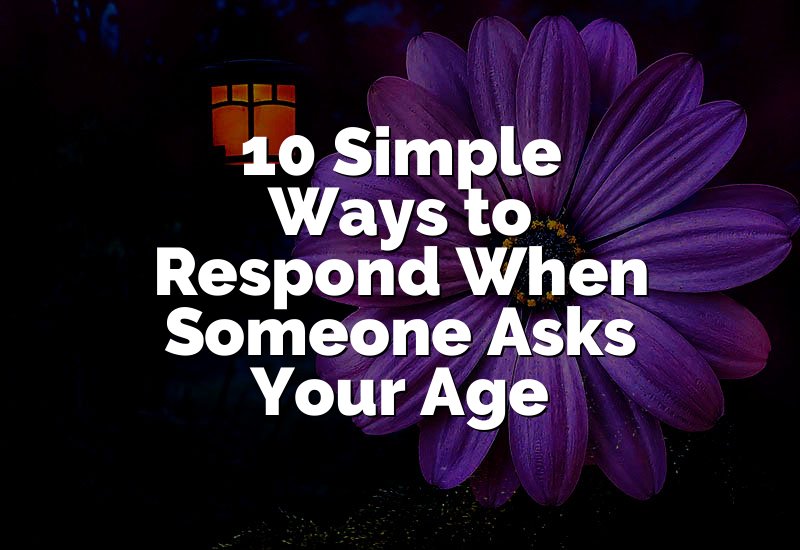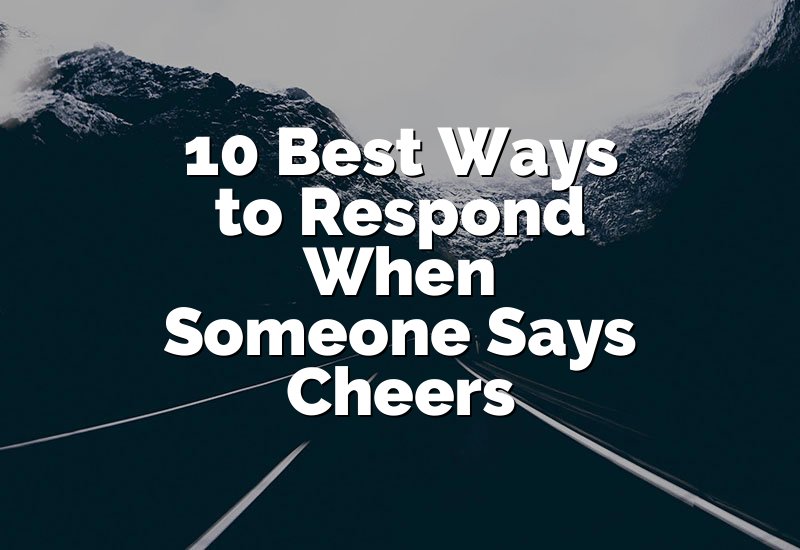Responding to “Como Estas” can be done by saying “Estoy bien,” which translates to “I am good” in Spanish. Greetings play a crucial role in communication, and a common way to greet someone is by inquiring “Como Estas,” which translates to “How are you?”
In Spanish. It’s a polite and friendly way to initiate a conversation, especially when meeting a Spanish-speaking individual. Responding promptly and appropriately demonstrates respect for their language and culture. To reply, you can simply say “Estoy bien,” which translates to “I am good.
“This concise and straightforward response acknowledges the greeting and gives a positive answer. We will explore different ways to respond to “Como Estas” and provide additional phrases to keep the conversation flowing smoothly.
Understanding The Greeting
Literal Meaning Of ‘Como Estas’
The phrase ‘Como Estas’ translates literally to ‘How are you?’ in English. It is a simple yet genuine way of expressing concern for someone’s well-being. This greeting is commonly used in both formal and informal settings, allowing individuals to initiate conversations and show their interest in the other person’s overall state.
Cultural Significance Of The Greeting
The cultural significance of ‘Como Estas’ can be seen in its widespread usage among Spanish-speaking communities. It reflects the importance of personal connection and fosters a sense of community.
Unlike in some cultures, where greetings might be seen as mere formalities, the Spanish language places significance on personal well-being and establishing an emotional connection right from the start.
Furthermore, responding to ‘Como Estas’ shows respect and demonstrates your social awareness, making a positive impression on the person you’re conversing with. By understanding and embracing this cultural aspect, you can improve your communication skills and build stronger relationships with Spanish speakers.
27 Ways to Respond to Como Estas
- “Estoy bien, gracias.” (I’m well, thank you.)
- “Muy bien, ¿y tú?” (Very well, and you?)
- “No me puedo quejar.” (I can’t complain.)
- “Así, así.” (So-so.)
- “Estoy genial, gracias por preguntar.” (I’m great, thanks for asking.)
- “Me siento excelente hoy.” (I feel excellent today.)
- “Un poco cansado/a, pero bien en general.” (A bit tired, but overall fine.)
- “Estoy feliz hoy.” (I’m happy today.)
- “Podría estar mejor, pero todo bien.” (I could be better, but everything is okay.)
- “Estoy un poco estresado/a últimamente.” (I’ve been a bit stressed lately.)
- “Me encuentro muy tranquilo/a.” (I feel very calm.)
- “¡Estoy de maravilla!” (I’m fantastic!)
- “No muy bien, desafortunadamente.” (Not very well, unfortunately.)
- “Gracias por preguntar, estoy emocionado/a por hoy.” (Thanks for asking, I’m excited for today.)
- “Me siento un poco cansado/a, pero contento/a.” (I feel a bit tired, but happy.)
- “Estoy en las nubes hoy.” (I’m in the clouds today.)
- “Mejorando día a día.” (Improving day by day.)
- “Estoy un poco enfermo/a, pero sobreviviendo.” (I’m a bit sick, but surviving.)
- “Estoy más o menos, ¿y tú?” (I’m so-so, and you?)
- “No tan bien, tuve un día difícil.” (Not so well, had a tough day.)
- “En general, me siento positivo/a.” (Overall, I feel positive.)
- “Estoy emocionado/a por lo que está por venir.” (I’m excited for what’s to come.)
- “Estoy relajado/a y disfrutando del día.” (I’m relaxed and enjoying the day.)
- “Un poco abrumado/a, pero bien.” (A bit overwhelmed, but okay.)
- “Estoy en paz.” (I’m at peace.)
- “Me siento agradecido/a por todo.” (I feel grateful for everything.)
- “Estoy listo/a para lo que venga.” (I’m ready for whatever comes.)
Also Read: 19 Awesome Ways to Respond to Narcissists
Appropriate Responses
Respecting And Reflecting Cultural Norms
When responding to “Como Estas,” it is essential to respect and reflect the cultural norms of Spanish-speaking countries. Understanding the cultural context helps to build rapport and fosters a positive interaction. Here are a few guidelines to keep in mind:
- Use appropriate language: Responding in Spanish shows respect and appreciation for the language and culture. Even if you are not fluent, making an effort to respond in Spanish is highly regarded.
- Show genuine interest: Responding with a sincere and positive attitude demonstrates your respect for the person and their well-being. Keep in mind that “Como Estas” is a common greeting, and a general response should reflect a genuine interest in their current state.
- Consider nonverbal cues: In addition to the words you choose, your body language and facial expressions play a vital role in communication. Smiling and maintaining eye contact convey warmth and friendliness.
Choosing Between Formal And Informal Responses
Deciding whether to respond formally or informally depends on the level of familiarity you have with the person you are conversing with. Here are a few points to consider:
| Formal Response | Informal Response |
|---|---|
| Option 1: Estoy bien, ¿y usted? (I’m well, and you?) | Option 1: Estoy bien, ¿y tú? (I’m well, and you?) |
| Option 2: Todo va bien, gracias. ¿Y usted? (Everything is going well, thank you. And you?) | Option 2: Todo va bien, gracias. ¿Y tú? (Everything is going well, thank you. And you?) |
| Option 3: Bien, ¿y usted? (Fine, and you?) | Option 3: Bien, ¿y tú? (Fine, and you?) |
Choosing between formal and informal responses depends on the situation and the level of familiarity between you and the person you are speaking with. If the conversation takes place with someone you have a professional relationship with, it is advisable to opt for a formal response. Conversely, if you are speaking with a close friend or family member, an informal response would be more appropriate.
By respecting cultural norms and selecting the appropriate level of formality in your response, you can engage in meaningful conversations and build strong connections when greeted with “Como Estas.”
Expressing Different Levels Of Well-being
When engaging in a conversation, it is important to be able to express different levels of well-being in response to Como Estas. By conveying your general well-being or specific emotions or states, you can effectively communicate how you are feeling. Let’s explore these different ways of responding:
Responding With General Well-being
When someone asks you Como Estas, you can respond with your general well-being by using phrases such as:
- I’m doing great!
- I’m feeling good today.
- I’m fine, thank you.
- Everything is going well.
These responses indicate a positive overall state of well-being without going into specific details.
Conveying Specific Emotions Or States
If you want to express specific emotions or states, you can choose from a range of responses tailored to your feelings. Here are some examples:
| Response | Meaning |
|---|---|
| I’m ecstatic! | I’m extremely happy and excited. |
| I’m a bit tired. | I feel slightly fatigued. |
| I’m feeling down. | I’m experiencing sadness or a low mood. |
| I’m stressed out. | I’m under a lot of pressure and feeling overwhelmed. |
By using these specific responses, you can give the other person a more detailed understanding of your current emotional state or well-being.
Remember, when responding to Como Estas, it’s essential to consider who you’re talking to and the context of the conversation. Choosing the appropriate response will ensure effective communication and help build stronger connections with others.
Mastering Confidence In Your Response
Confidently reply to “Como Estas” with these expert tips to master your response. Enhance your conversational skills and engage in meaningful conversations effortlessly.
Body Language
When it comes to responding confidently to the question “Cómo estás?” (How are you?), your body language plays a crucial role. The way you carry yourself can convey to others that you are confident and comfortable in your response. Here are a few tips on using your body language effectively:
- Stand or sit up straight with your shoulders back to show confidence.
- Make eye contact with the person you’re speaking to, as it demonstrates that you are engaged in the conversation.
- Offer a warm smile to create a friendly and approachable demeanor.
- Use open gestures, such as keeping your arms relaxed and avoiding crossing them, to appear more receptive and open to communication.
Tone Of Voice
Your tone of voice can significantly impact the impression you make when responding to “Cómo estás?” It is essential to strike the right balance to convey confidence and enthusiasm. Here are a few tips on mastering your tone of voice:
- Speak clearly and audibly to ensure your response is easily understood.
- Use a friendly and warm tone to convey sincerity and positivity.
- Avoid sounding overly rehearsed or robotic; instead, let your personality shine through your voice.
- Pay attention to your pacing, ensuring that your words flow smoothly and confidently.
Using Expressive Vocabulary
One effective way to demonstrate confidence in your response to “Cómo estás?” is by using expressive vocabulary. By choosing words that accurately describe how you feel, you can make a lasting impression. Consider these tips when selecting your words:
| Choose positive adjectives that reflect your current state of mind. | Opt for descriptive words that paint a vivid picture of your emotions. |
| Use powerful and energetic language to showcase your enthusiasm. | Vary your vocabulary to avoid sounding repetitive or monotonous. |
Remember, the goal is to respond confidently and authentically to “Cómo estás?”. Incorporating these tips in your body language, tone of voice, and vocabulary will help you master the art of confidently responding to this common greeting.
Conclusion
To sum up, understanding how to respond to “Como estas” is crucial for effective communication. By showing genuine interest in the other person’s well-being and using appropriate responses, you can build strong connections. Remember to consider cultural differences and context.
Incorporating these guidelines will help you navigate the intricacies of responding to this common greeting, leading to more meaningful interactions. Start practicing these responses, and watch your conversations flourish.









